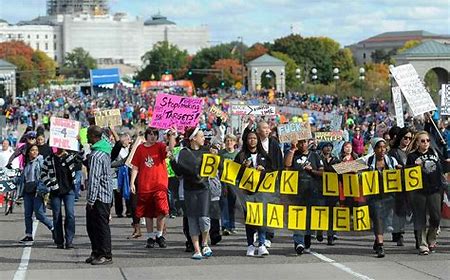
Unless you’ve been living under a rock, it is with certainty that you’ve witnessed the civil unrest that has been ensuing since May 25, 2020. It was on this day that the world witnessed George Floyd beg and plead for his life, call out to his mother and eventually take his last breaths while Derek Chauvin kneeled on his neck. For many, it was an image that no one would forget and there was a worldwide internal shift, enough was enough. So it began, The world watched as protestors took to the streets demanding justice and arrests be made. People from all walks of life, from every faith, from every race, around the world came together to protest against the death of George Floyd, as well as systemic racism and police brutality during a pandemic.
We’ve seen this scenario playout time and time again, but something was different this time. What made this time different? It could be the relatability factor, mothers across the globe witnessing a son calling out to his deceased mother. It could be the gift of time and the stillness of the world due to pandemic. People that normally would have been at work, could now take to the streets and let their voices be heard. Whatever the reasoning, it was different this time and there was no letting up, justice was going to be had and a call for action would not stop.
Then, June 3, 2020 rolled around, otherwise known as Blackout Tuesday, another moment that will be lamented in our memories for years to come. What began as the music industries day of silence in memory of George Floyd, turned into a social media phenomenon. Corporate entities within the music industry such as Live Nation, Spotify and Apple agreed to the day of silence and vowed to go dark in terms of most operations. Social media users and celebrities alike joined the movement and made it their own, posting blacked out squares and using the hashtag #blackouttuesday to signify their support of the movement.
Numerous companies joined the call for action as soon as they became aware of the social movement, while others took weeks to take a stand. These same corporations pledged millions of dollars to the Black community by way of grants and donations, while others said they’d do more to increase African American representation amongst their workforce, especially in leadership and executive roles. Other companies blacked out squares on social media and refused to mention African Americans specifically until they were called out by social media followers for their ambiguity.
Users were beginning to realize that some of these companies that were promoting racial justice and support of the Black community on social media weren’t practicing what they preached behind corporate doors. The inauthenticity that some companies were displaying, by talking the talk, but not walking the walk led some consumers to believe that some of the corporate calls to action were well played out publicity stunts. For this very reason, the Pull Up or Shut Up movement began, where corporations were called to the forefront to divulge their companies racial makeup. Just as suspected there was much work that needed to be done in terms diversity, equity and inclusion. Many of the companies that divulged their statistics lacked Black employees overall, and those who did have Black employees only employed frontline workers. Additionally, there was an overwhelming absence of African Americans in c suite or executive level positions. So where do we go from here? Only time will tell if corporations will back their words with action and make a conscious effort to improve their diversity, equity and inclusion initiatives.
https://www.google.com/amp/s/www.nytimes.com/2020/06/02/arts/music/what-blackout-tuesday.amp.html

6 Responses to Pull Up or Shut Up: You Can Talk the Talk, but Can You Walk the Walk?